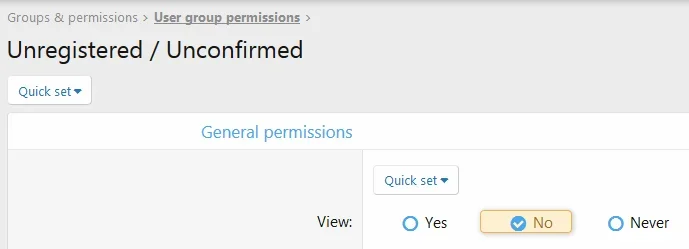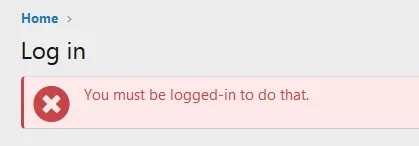- Affected version
- 2.0.0 RC2
Hello,
Xenforo2 is returning HTTP/1.1 403 Forbidden when "Unregistered" does not have any view access to any portion of the forum. As much as it might have some sense it is wrong. More over this state confuses server monitoring (nagios) which is throwing alerts all over the place. And most "funny" part is that it returns "403" but also sends some data . See details bellow.
. See details bellow.
Having this (and no explicit allow on any node):

Causing this:

Which actually returns this:
Nagios monitoring:
As per RFC2616
Xenforo2 is returning HTTP/1.1 403 Forbidden when "Unregistered" does not have any view access to any portion of the forum. As much as it might have some sense it is wrong. More over this state confuses server monitoring (nagios) which is throwing alerts all over the place. And most "funny" part is that it returns "403" but also sends some data
Having this (and no explicit allow on any node):

Causing this:

Which actually returns this:
Code:
wget:
--2017-11-20 10:04:52-- https://xxx.xxx.xx/
Connecting to xxx.xxx.xx (xxx.xxx.xx)|###.###.###.###|:443... connected.
HTTP request sent, awaiting response... HTTP/1.1 403 ForbiddenNagios monitoring:
Code:
HTTP WARNING: HTTP/1.1 403 Forbidden - 20290 bytes in 1.357 second response timeAs per RFC2616
403 Forbidden
The server understood the request, but is refusing to fulfill it. Authorization will not help and the request SHOULD NOT be repeated. If the request method was not HEAD and the server wishes to make public why the request has not been fulfilled, it SHOULD describe the reason for the refusal in the entity. If the server does not wish to make this information available to the client, the status code 404 (Not Found) can be used instead.